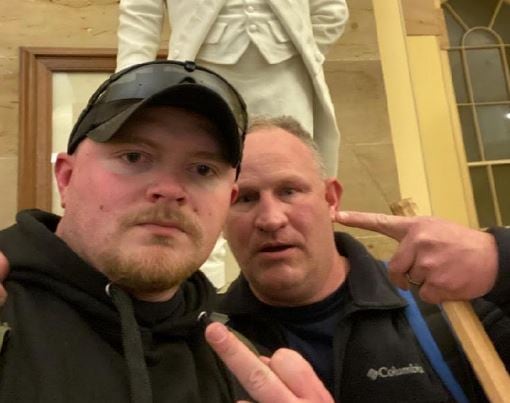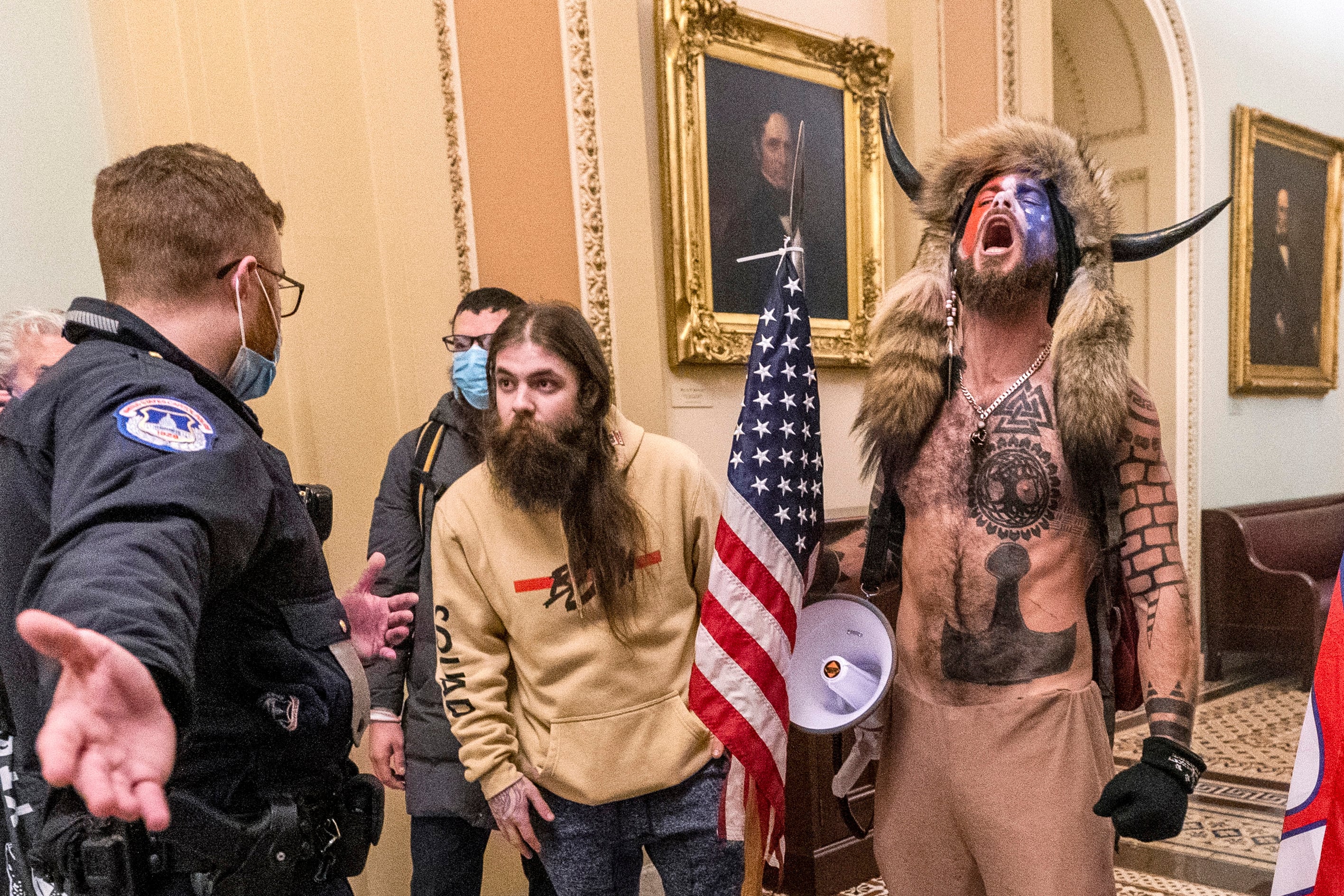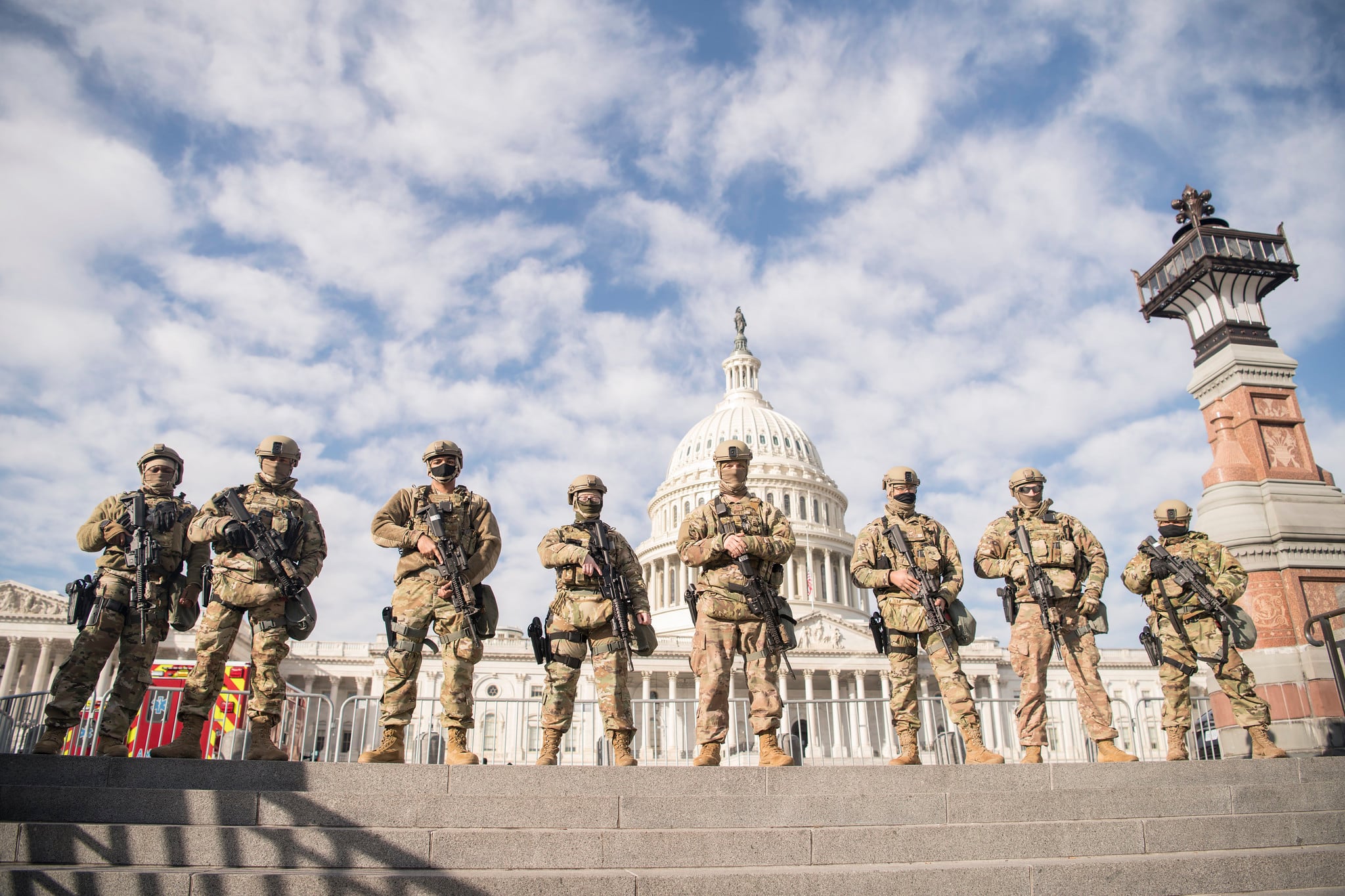The Army can’t say how many soldiers have been kicked out for extremism in recent years, largely because those incidents are filed under the broad category of “misconduct” discharges, according to the service’s response to a Freedom of Information Act request.
Army officials at the Pentagon did not have data that could shed light on the issue either.
“Currently, extremism behavior is not identified by a separate code for discharges,” said Army spokesman Lt. Col. Gabriel J. Ramirez. “As we await further DOD guidance on extremism, we are conducting stand downs across the force and exploring options on ways to further combat this corrosive issue.”
The data omission makes it difficult to understand the extent to which extremism is a problem in the ranks — an issue that came to the forefront after at least 22 current or former service members were charged with federal crimes for participating in the Capitol riot in Washington, D.C., last month.
Defense Secretary Lloyd Austin announced in early February plans for a 60-day stand-down across the military to address the issue of extremism among troops. During a press briefing Friday, he hinted at plans to gather data on extremism, but did not detail what that would entail.
“I expect for the numbers to be small. But, quite frankly, they’ll probably be a little bit larger than most of us would guess,” Austin said. “I would just say that small numbers in this case can have an out-sized impact.”
RELATED

The Army has regulations that guard against extremism, and the guidance is punitive, meaning soldiers who violate it can be punished under the Uniformed Code of Military Justice and even separated from the service.
But the number of administrative separation boards that dealt with extremism can’t be looked at separately, according to Human Resources Command’s FOIA office.
“The information being sought is not tracked or broken down as requested. The discharge information would fall under a separation code that is inclusive of all ‘Misconduct’ discharges,” reads the command’s response to a FOIA request. “This command does not have a separation code for just extremist activities.”
The Army Crime Records Center is fielding a separate FOIA request regarding extremist arrests, but it’s not clear whether they would even deal with the bulk of extremism-related cases.
Without criminality, Army CID special agents wouldn’t necessarily get involved in the case, a CID official said.
RELATED

Adverse actions for extremism can take many forms, including non-judicial punishments under UCMJ article 15 or Equal Opportunity investigations, said retired Army judge advocate Lt. Col. Franklin D. Rosenblatt. Other extremist acts could fall under UCMJ article 134 for conduct prejudicial to good order and discipline.
“A soldier who refuses to take down a Confederate flag from a barracks room, for example, could be disciplined for failure to obey an order rather than engaging in extremist activity,” said Rosenblatt, who now works for the Mississippi law firm Butler Snow LLP and helps soldiers who face racial discrimination.
“There is admittedly not always a clear line between sympathizing with causes such as QAnon and violations of military orders,” Rosenblatt added.
The Army regulation on extremism doesn’t list specific organizations that are off-limits. But some groups that appear to be under scrutiny are those included on an infographic circulated by the Army’s John F. Kennedy Special Warfare Center and School.
RELATED

The infographic was made by the New York City Police Department’s intelligence bureau and highlighted “extremist imagery” used by adherents to QAnon, the Proud Boys, the Three Percenters and the Oath Keepers.
The special warfare center used the infographic to familiarize leaders with new extremist symbols after one of their medical courses had to change its logo last year because it was nearly identical to imagery used by an anti-government militia.
“We’re keenly aware that we’re on the leading edge of a broader Department of Defense effort, and we’re awaiting guidance before we do more than educate and inform our formation,” the school’s chief of staff, Col. Matt Gomlak, said last week.
The infographic describes “Kek” flags, Boogaloo patches and variations of the Pepe the Frog meme as examples of imagery co-opted by extremists, in addition to more recognizable swastikas and Norse runes long used by neo-Nazis.
The blurred line between internet culture and traditional extremism may prove difficult for the Pentagon in tackling the problem, especially when it’s not always easy to discern what’s against regulations.
Kyle Rempfer was an editor and reporter who has covered combat operations, criminal cases, foreign military assistance and training accidents. Before entering journalism, Kyle served in U.S. Air Force Special Tactics and deployed in 2014 to Paktika Province, Afghanistan, and Baghdad, Iraq.





